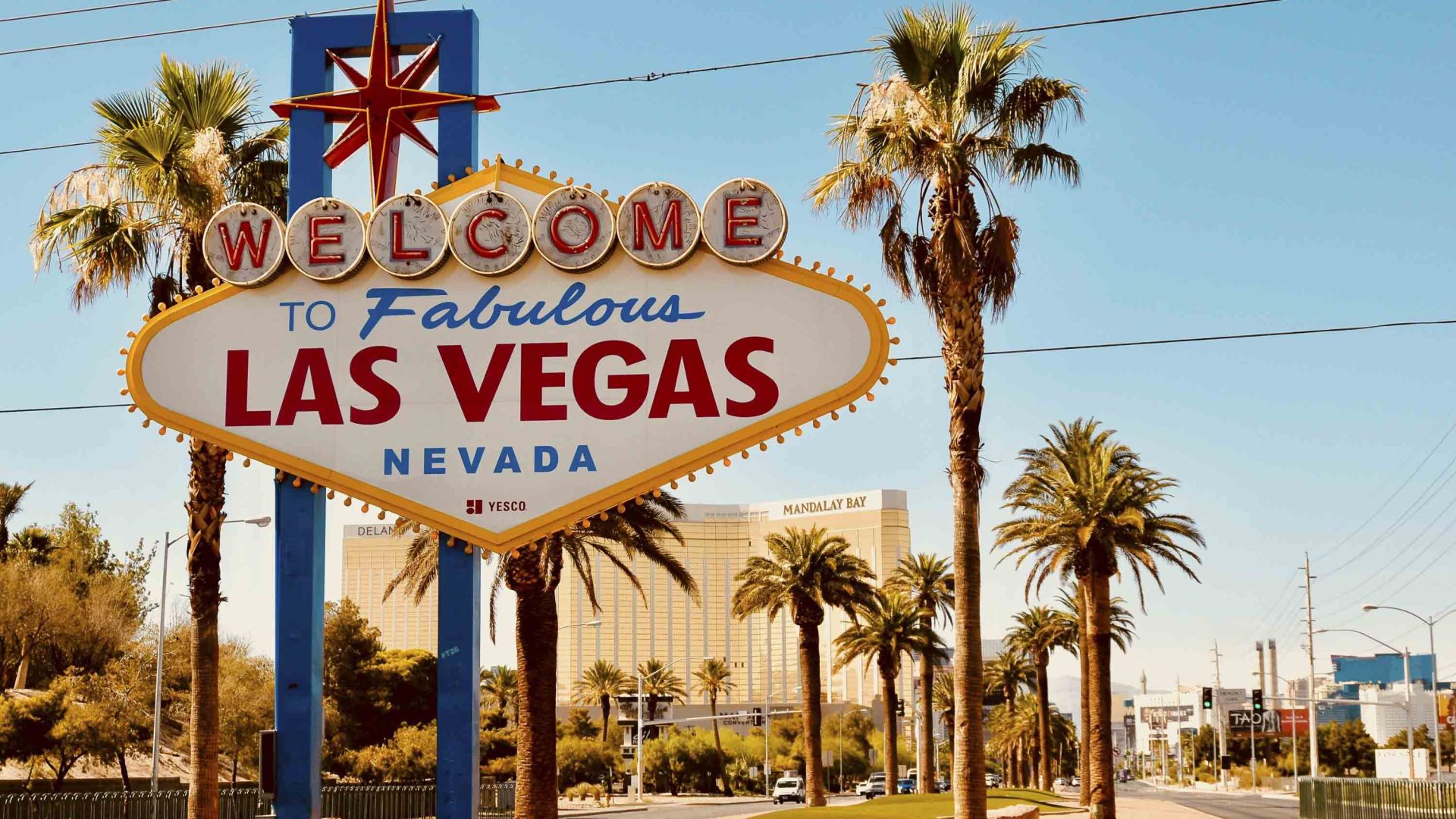
Las Vegas is a glittering oasis in the desert, welcoming close to 40 million tourists annually and defying the odds of nature with its very existence. But Sin City is also home to an innovative approach to water conservation and sustainability.

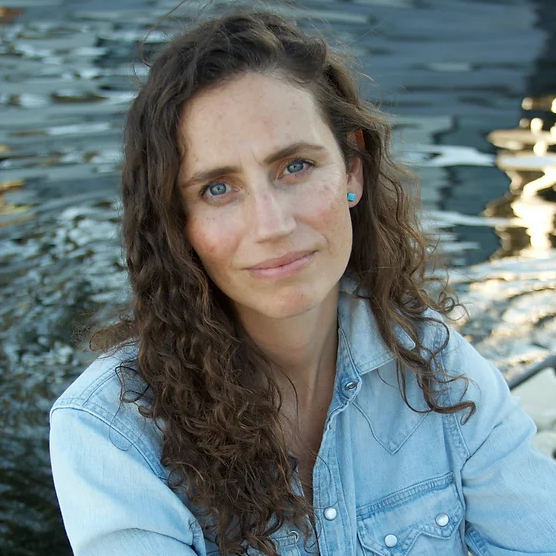
Las Vegas is a glittering oasis in the desert, welcoming close to 40 million tourists annually and defying the odds of nature with its very existence. But Sin City is also home to an innovative approach to water conservation and sustainability.
My first time to Las Vegas, I made the rookie mistake of heading there straight from the solitude of a trip to the Grand Canyon, leaving one of the world’s greatest natural wonders only to stumble into the least natural place I could imagine. My brain felt scrambled as I wandered down The Strip, trying to make sense of light-up fountains, and low-level debauchery happening at midday. And I don’t think my experience is unique.
Walk down the Las Vegas strip in the summer when temperatures are often well into the triple digits and it might look like the city is spewing precious water out into the air, making a mockery of nature. In Nevada, the driest state in the United States, fountains cascade, pools glisten in the sunlight, and misters dampen scalding sidewalks. Any tourist could see a contrived oasis in an unwilling environment. In the throes of a climate crisis, it seems like Las Vegas is a destination doing it all wrong.
But, as plenty of people who live in Las Vegas can tell you, looks can be deceiving. The city of sin, smack dab in the middle of the Mojave desert, is actually a model for water conservation, reuse and smart planning—in part because it’s had two choices: Adapt or shrivel.
According to the Southern Nevada Water Authority (SNWA), the area’s water provider, water use has declined by 48 percent in the last two decades, despite the fact that 750,000 new people have moved to the region. That’s a good thing. But the past 23 years have been the hottest and driest in the Colorado River Basin, in which Vegas sits. The southwestern US is in a period of historic drought, which scientists don’t foresee ending, given current emission scenarios. Could that mean a good thing might not be good enough?
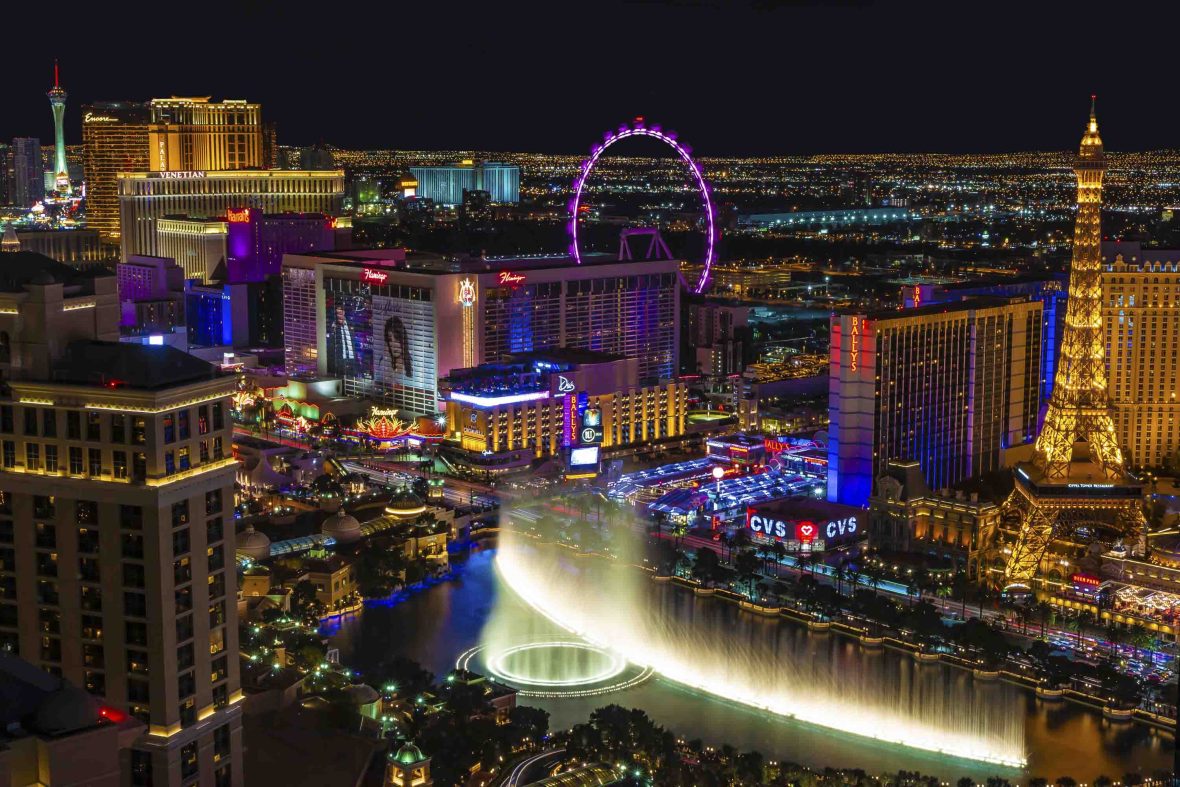
Ninety percent of Las Vegas’ water comes from Lake Mead, the US’s largest man-made reservoir (and a destination for boaters and mob bosses looking to bury bodies alike).
That reservoir, and the Colorado River system that feeds it, are in jeopardy. Forty million people, including the 2.2 million in Las Vegas, depend on the river. And after two decades of drought—and nearly a century of overuse—there’s not enough water in the river to meet demand. The elevation of Lake Mead has dropped 170 feet since 2000, revealing skyscraper cliffs, and leaving marinas and lakeside communities high and dry. It’s a stark symbol of the fact that water supplies are abused, and because of the way water is managed in the western US, the dropping lake level leaves Las Vegas vulnerable.
As you walk down The Strip or wander through Vegas’s ever-expanding neighborhoods, you’ll notice that patches of green grass now look out of place. The city in the Mojave Desert is starting to look like its natural habitat.
Nevada receives 300,000 acre-feet of water from the Colorado River annually. But last year, that amount was reduced to 275,000 acre-feet thanks to a series of federally mandated cutbacks triggered by Lake Mead’s falling lake level. It will likely be reduced even further this year. As the lake level drops in a hotter, drier future, the Bureau of Land Management has asked the states in the river basin to find ways to cut back water use by up to four million acre-feet a year, to stay within the river’s supply. “That’s the reason our water supply was reduced by seven billion gallons last year,” Bronson Mack, public information officer for Southern Nevada Water Authority, told me. “It’s further reinforcing the need for us to manage our water dependency through aggressive and progressive conservation measures.”
Those cutbacks are part of a big, necessary move to try to live within the hydrological reality of the arid desert. That puts pressure on Vegas, the state’s biggest population center, tourist destination and economic engine. And the glittering city in the desert has stepped up to the pressure, creating a plan for water reduction and conservation that’s both highly progressive and replicable.
In 2002, Las Vegas hit an inflection point. That year, the Colorado River experienced its lowest-ever recorded flows, and Southern Nevada Water Authority used more water than it ever had before. Demand outstripped supply. “The drought woke us up in 2002 and showed that we needed to do a whole lot more than we were doing at this point this organization responded heartily,” JC Davis, director of customer care and field services for the Las Vegas Valley Water District, said over a phone call.
Starting in that particularly dry year, they came up with a drought plan to scale back unnecessary water use and use the water they did need more efficiently. Plans targeted the region’s biggest water uses, like landscaping and golf courses, and incentivized people with tax breaks and subsidies to cut back.
Historically, landscape watering has been the biggest use in the community—each square foot of lawn uses 73 gallons of water a year—and so they started there. First, came the incentives. For every square foot of grass homeowners ripped out and replaced with xeriscaped planting or other water-smart landscaping, they were paid USD$3. Through the program, Vegas has pulled out a quarter of the turf grass in the metro area, which saves 11 billion gallons of water every year. It’s proven to be an effective money- and resource-saving technique.
Last year, Las Vegas and other nearby cities adopted ordinances banning grassy front yards. By 2027, all non-functional grass in the city will be gone. “We want to be good citizens,” Hoot Gibson, a retiree who relocated from Bend, Oregon, to Las Vegas a few years ago, told the Salt Lake Tribune. “Everybody recognizes the issue with the Colorado River level dropping.”
It hasn’t been without pushback from locals. Kurtis Hyde, maintenance manager at Par 3 Landscape and Maintenance, told the SLTribune that community meetings have gotten heated—“People get emotional about grass,” he said. But for the most part, residents seem to be on board with stricter water conservation—even if that means walking around a city of artificial turf. “It doesn’t look like it’s artificial grass to me. I feel like it’s real … It feels good,” homeowner Linda Laird told Reuters. “I feel like if I can do my small little part to helping conserve some of our water here in Las Vegas, that I’m doing a small part to help everyone else,” she said.
As you walk down the strip or wander through the ever-expanding neighborhoods, you’ll notice any small patches of green grass now look out of place. The city in the Mojave Desert is starting to look like it’s embracing its natural habitat.
Even if you’re a visitor to Vegas like I am, you’ll notice the shifts. It’s not just home lawns that are changing; the entertainment and travel industries are stepping up too. Golf courses and casinos are the economic engines that bring people into Las Vegas, but they also play their part in conservation. In 2022, Southern Nevada Water Authority passed a resolution limiting swimming pool sizes to 600 square feet. The measure is expected to save more than 32 million gallons over the next 10 years.
“Everything we use indoors is recycled. If it hits a drain in Las Vegas, we clean it. We put it back in Lake Mead.”
- John Entsminger
In 2021, the city banned the use of Colorado River Water for any new golf courses. At the end of last year, Las Vegas Valley Water District, which distributes water in the area, said that they would no longer permit buildings that use evaporative cooling, a method that uses 10 percent of the region’s water allocation and was previously used by many of the big casinos and hotels. It’s a move to re-work the ways that many large, often wasteful, businesses are using water.
The Las Vegas ‘Strip’, which is the region’s biggest employer, only uses five percent of the area’s water supply, in part because businesses along the strip have been highly proactive about water reuse and recycling. For instance, the giant Bellagio fountain takes 20 million gallons of water to fill. It can lose significant amounts to evaporation, but the water in the fountain is constantly filtered and reused in a closed-loop system. It doesn’t end up in the sewer.
According to SNWA, casinos and hotels use less than eight percent of the region’s water, most of it in hotel rooms. And 99 percent of that water is recycled. It’s either treated for re-use in the city or cleaned and pumped back into Lake Mead via the Las Vegas Wash, a wetland that drains back into the lake.
That’s another place where the human-made oasis of Las Vegas has been ahead of the curve compared to other tourism hubs in arid desert landscapes: The city treats and reuses the vast majority of its domestic water. “Everything we use indoors is recycled. If it hits a drain in Las Vegas, we clean it. We put it back in Lake Mead,” John Entsminger, the general manager of the Southern Nevada Water Authority, told me. The SNWA is also partnering with other utilities, like some in southern California, to treat wastewater for drinking water. It’s an idea that’s been taboo for a long time but is gaining popularity due to necessity and improving water treatment technology.
Through all those measures Vegas is aiming to get water use down to 86 gallons per capita per day by 2035. That sounds like a lot, but it’s a move in the right direction, considering the national average in the US is over 100 gallons per day.
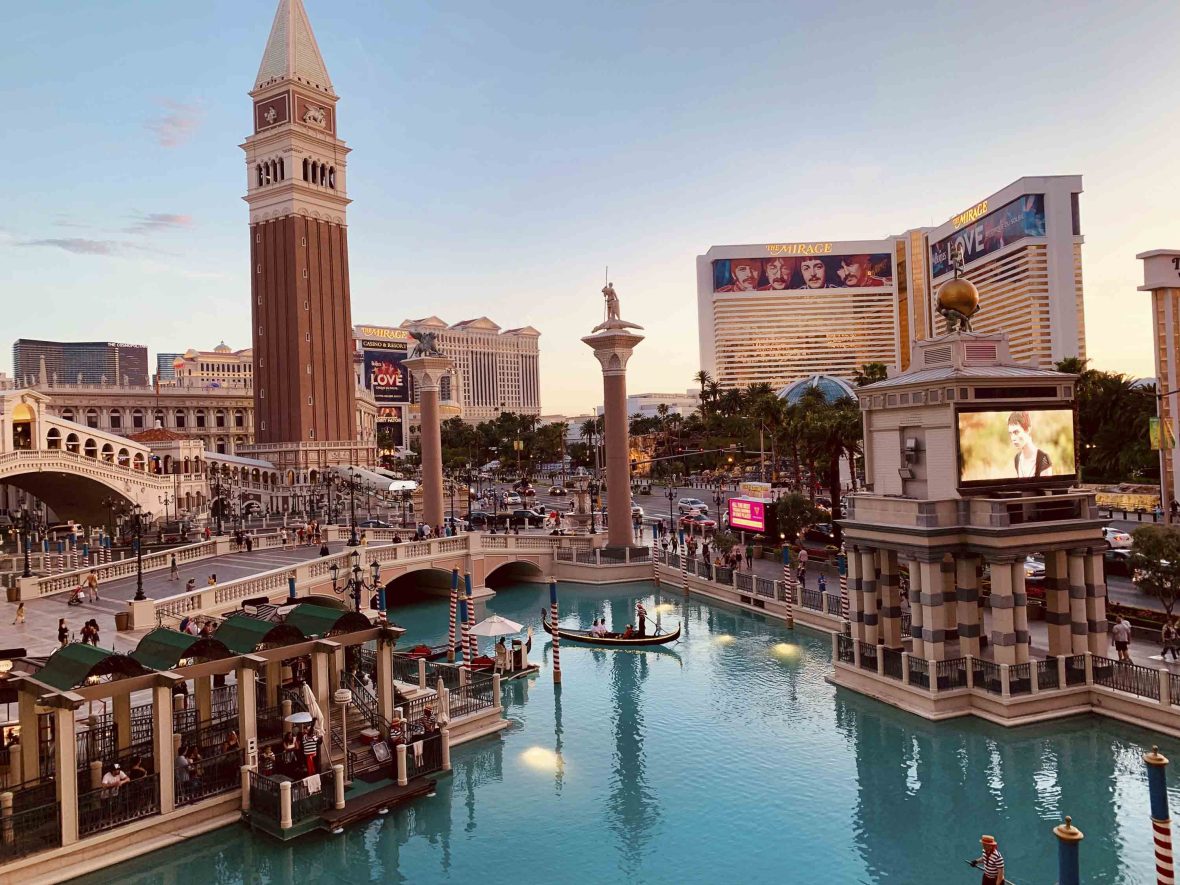
So far, it’s working. “Las Vegas has become a water conservation rock star in recent decades,” Brian Richter, chief scientist at the Global Water Program of The Nature Conservancy, told the LA Times. “Their leadership in reducing outdoor water use is of particular importance. The fact that they’ve now adopted a goal of further reducing their water use by another 23 percent by 2035 is truly admirable.”
There are still bad eggs in the area, like Lake Las Vegas, a high-end planned community with a 320-acre human-made lake, which is one of the area’s biggest water users. But overall, Las Vegas and the state of Nevada are creating a model for how to live (and play) within the bounds of our resources in drier times—especially in fragile ecosystems like the Mojave Desert. As we face increased aridification, there are lessons a lot of places can learn: Conserve and reuse what you have. Give people good reasons to change. Think long and hard about what it means to live in a desert—and what is necessary to do so.
Like the city’s famous Strip, lined with campy replicas of the world’s famous human-made attractions—the Eiffel tower, the Colosseum, the Great Pyramid of Giza—Las Vegas at large has long leaned on fantasy. But when it comes to providing a future for that fantasy, the city is betting on conservation.
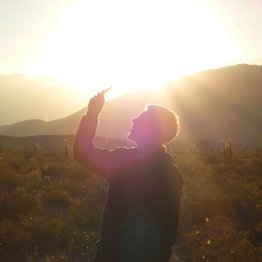







Can't find what you're looking for? Try using these tags: